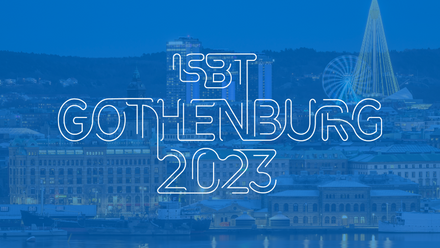The Bridging Vein to Vein with Big Data session included the following presentations:
1. Shuoyan Ning: Transfusion-related immune modulation and the use of big data analytics
2. Jingcheng Zhao: Bloody big data - Haemovigilance using routinely collected healthcare data
3. Angelo D'alessandro: Chemical individuality of the blood donor as gleaned by high-throughput metabolomics of over 13,000 end of storage red blood cell samples and multi-omics analyses of 643 recalled donors
4. Abdirahaman Musa Jibrail: Bridging the Gap Geospatial Analysis to Estimate Demand and Unmet Need of Blood Products in Rural Kenya
MODERATORS: Gustaf Edgren and Katja van der Hurk
After the presentation, there was a questions and answers session, which is also included in the recording.
Abstract
Bridging the gap: Geospatial analysis to estimate demand and unmet need of blood products in rural Kenya
A Munoz-Valencia*1, S Kundu2, V Raguveer2, A Musa3, C Makanga4, S Onyango5, N Thivalapill2, W Williams2, T Kivuli4, L Barnes6, N Raykar2
1Institute for Clinical Research and Education, University of Pittsburgh, Pittsburgh, 2Program in Global Surgery and Social Change, Harvard Medical School, Boston, United States, 3Ministry of Health and Sanitation, Turkana Government, Turkana, 4Institute of Healthcare Management, Strathmore University, Nairobi, 5Lodwar Blood Transfusion Satellite Center, Lodwar, Kenya, 6Linda S. Barnes Consulting, Seattle, United States
Background: Blood products are an essential medicine, and understanding demand and transfusion patterns is crucial for resource allocation and healthcare delivery. In Sub-Saharan Africa and much of the world, there is a widely known shortage of blood available for transfusion. However, little is known about the actual demand for blood or its availability at the facility level, specifically for rural populations. We believe addressing these gaps in our knowledge of blood supply systems may be of value in Turkana, a rural county in North-western Kenya with a population of about one million, where hospitals have transfusion capacity but are forced to rely on distant centres for essential blood banking processes like screening for HIV, Hepatitis and Syphilis or blood components processing.
Aims: We aimed to measure the demand for blood products at a rural referral hospital in north-western Kenya and compare this with estimated blood needs based on the population served.
Methods: We used high-resolution population density maps for Turkana County, a rural region of north-western Kenya, and ArcPro software to count the population served in time-based facility service areas. We used a facility-based chart review to obtain data on blood products requested and transfused between April and August 2022. Lastly, we compared the actual blood demand with estimations of blood need based on modelled Kenya-specific blood need rates.
Results: We estimate this Kenyan referral hospital serves a population of 76,434–208,393, depending on the driving distance to the hospital between 30 and 90 min. During the study period, 486 requests for whole blood were placed, and 409 (84.15%) were fulfilled, representing an annualized demand of 1621 units. Based on an estimated county population of 926,976, we estimate 174.87 units of blood demand per 100,000 population less than the estimated national blood need of 3435 per 100,000 population. We also calculated the population catchment for 30-, 60- and 90-min drive areas (see Table). There were notable differences in population catchment across the facility service areas. The observed and estimated demand in the 60-min area was 2.07 times that in the 30-min area. Moreover, a 15-min difference represented a rise in the demand of 56.36%, while 30-min increments showed increments between 31.51% and 32.60%. Similarly, the estimated unmet demand varied widely across facility service areas. Going from a 30- to 45-min service area showed a rise in the unmet demand of 56.86%, from 30- to 60-min a rise of 107.52%, and from 30- to 90-min a rise of 172.88%.

